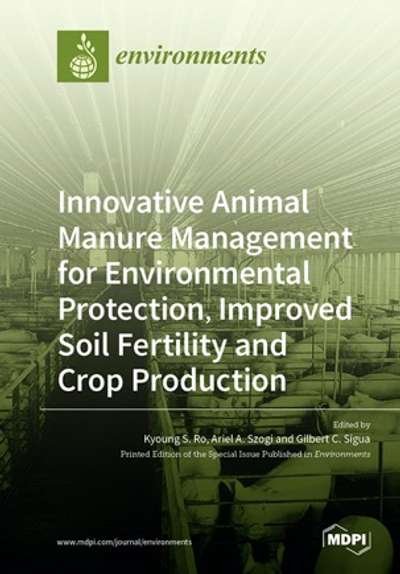Innovative Animal Manure Management for Environmental Protection, Improved Soil Fertility and Crop Production
Kyoung S. Ro, et al

Traditionally, livestock manure has been used to provide nutrients for plant growth and to improve soil conditions. However, the increase in concentrated animal feeding operations (CAFOs) results in high levels of plant nutrients, such as nitrogen and phosphorus, in the proximal crop and pasturelands as a result of applying more manure than what is required to meet the local plant nutrient demand. Soil runoff and leaching of land-applied manure can enrich the surface and ground water with nitrogen and phosphorus, leading to eutrophication and hypoxia. In addition, overapplication of animal manure contributes to pathogen spread, the release of hormones and other pharmaceutically active compounds, and the emission of ammonia, greenhouse gases, and odorous compounds. In this Special Issue, we present 11 interesting articles covering the production of renewable energy and fuels, extraction of ammonia from animal manure, the agricultural and environmental benefits of using animal manure or its derived materials such as biochar or ashes, and the difference in microbial communities and pathogen survival after anaerobic lagoon treatment.
*Available for as Download Only
MDPI Book Link (available for purchase)
Publication Details
- Published: 2022
- Publisher: Mdpi AG
- ISBN-10: 3039219561
- ISBN-13: 978-3039219568